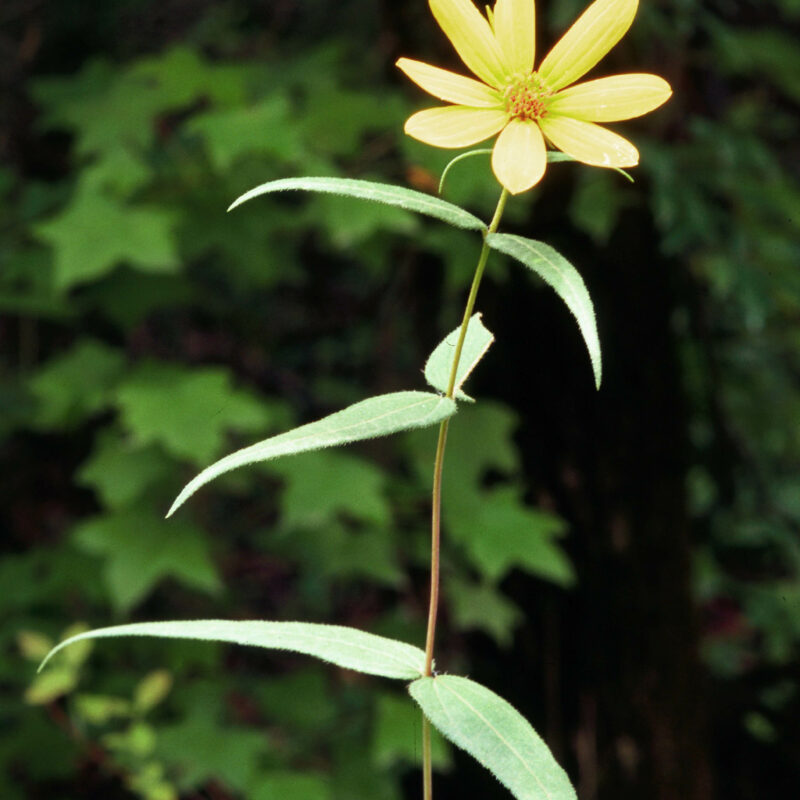Woodland SunflowerHelianthus strumosus
Woodland Sunflower can be difficult to identify due to its resemblance with a number of other sunflower species. It can be found in open woodlands savannas and does best in dry soil and sunny conditions. It is a rhizomatous plant that can spread aggressively.
USDA symbol: HEST
General Information
| Plant Type | Forb |
|---|---|
| Height | 3 to 6 feet |
| Light Exposure | Shade |
| Soil Moisture | Medium |
| Bloom Color | Yellow |

Tolerances
| Flooding / Inundation Tolerance | Low |
|---|---|
| General Resilience | 7 |
| Salt Tolerance | Medium |
| Stress Tolerance | Drought Tolerant, General Disturbance |
Pollinator Value: Very High
| Bloom Months | July to October |
|---|---|
| Larval Host of | Bees, Butterflies |
| Specific Pollinators Hosted | Chlosyne gorgone, Numerous bee species |
| Pollinator Benefit | Insect Pollinated, Provides Nectar, Stem Nesting, Supports Generalists |
Project Planning
| Project Type | Boulevard, Rain Garden, Shoreline Buffer |
|---|---|
| Coefficient of Conservatism | 6 |
| Herbivore Sensitivity | Medium |
| Lifespan | Perennial |
| Rate of Spread | Medium |
| Soil Stabilization | Shallow |
| Vegetative Reproduction | Clonal |
Range
| County | Anoka, Becker, Benton, Cass, Chisago, Clearwater, Dakota, Faribault, Fillmore, Goodhue, Hubbard, Kandiyohi, Mower, Pine, Pope, Ramsey, Rice, Sherburne, Sibley, Todd, Washington |
|---|---|
| Ecoregion | Driftless Area, Lake Agassiz Plain, North Central Hardwood Forests, Northern Glaciated Plains, Northern Lakes and Forests, Northern Minnesota Wetlands, Western Cornbelt Plains |
| Approximate Eco Province | Eastern Broadleaf Forest, Laurentian Mixed Forest, Prairie Parkland, Tallgrass Aspen Parklands |
